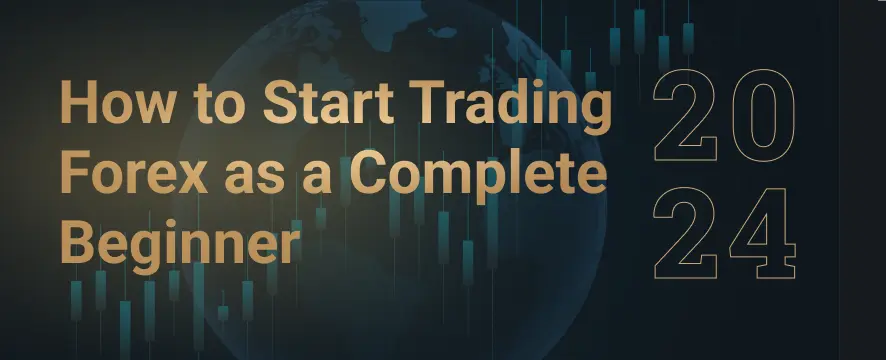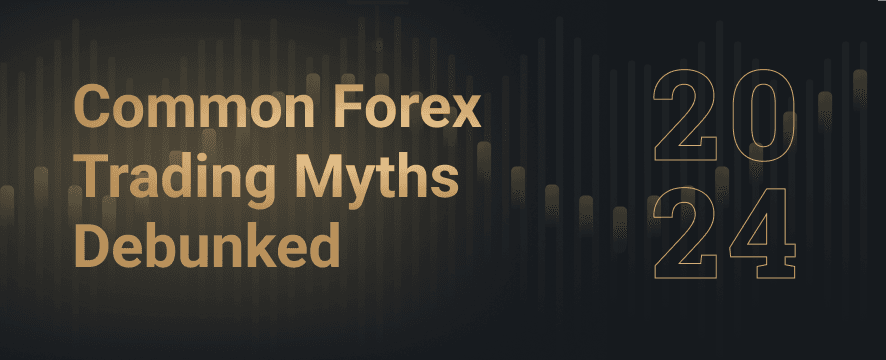7 min read
Share
The key to maximizing profit in forex trading lies in strategically selecting currency pairs based on liquidity, volatility, and trading expertise, while integrating effective technical and fundamental analysis methods.

Introduction
Forex Traders looking to profit in the Forex Market are always looking for the best possible trades to profit from a significant move in one or more currency pairs.
However, does it matter which currency pairs are traded, and what is the most profitable Forex pair to trade?
Not only do specific currency pairs have higher potential rewards, but also higher potential risks. Correctly choosing what currency pairs to trade can make a big difference.
Understanding Currency Pairs
How exactly do currency pairs tie into Forex Trading, and what role do they play?
Currency pairs are the foundation of Forex Trading, and each trade is conducted in ‘pairs.’
Each currency pair comprises two currencies – a base currency and a quote currency.
The currency pair reflects how much of the quote currency is needed to purchase one unit of the base currency.
Using the Euro (EUR) and US Dollar (USD) as an example:
If the EUR/USD exchange rate is 1.06, this means that 1.6 US Dollars is required to purchase one Euro.
The first currency pair listed is the base currency, and the second currency listed is the quote currency.
Therefore, in our example (EUR/USD), the EUR is the base currency, and the USD is the quote currency.
Forex Traders can either go long or short on any specific currency pair.
Sticking with our example of the EUR/USD currency pair, traders would go long or short in the following way:
• Going Long: You would buy Euros and sell US Dollars. When you take a long position, you believe that the base currency (in this case, the Euro) will strengthen against the quote currency (in this case, the Dollar).
• Going Short: When you go short, you take the opposite stance to going long. In this case, you believe the Euro (base currency) will weaken against the Dollar (quote currency).
When you go long, you make money when the base currency appreciates relative to the quote currency.
When you go short, you make money when the base currency depreciates relative to the quote currency.
Currency pairs are split into three main ‘categories,’ which are the following:
• Major Currency Pairs
• Minor Currency Pairs
• Exotic Currency Pairs
Major Currency Pairs
There are a total of seven major currency pairs, which are the following:
EUR/USD, USD/JPY, GBP/USD, AUD/USD, USD/CHF, NZD/USD, and USD/CAD
Interestingly, each major currency pair includes the US Dollar. These currency pairs are the most commonly traded and offer several pros and cons that traders should be aware of.
Pros:
• Liquidity
➢ Because major currency pairs are the most commonly traded, they are highly liquid, which means that trades can be entered and exited with minimal price slippage. Furthermore, transactions will have little to no impact on the price.
• Lower Costs
➢ This is another benefit of the high liquidity of major currency pairs. These currency pairs typically have a tighter spread, which is the difference between the buying and selling price. Tighter spreads mean lower costs for traders. This is especially beneficial for Forex Traders who execute many trades.
• More Reliable Data
➢ Because major currency pairs are so commonly traded, the market data is much more reliable. This is particularly beneficial for traders relying primarily on technical analysis, as the more reliable market data makes it easier to predict future price action.
Cons:
• Exposure to The US Dollar
➢ Each of the seven major currency pairs is exposed to the US Dollar. Therefore, any trade you take has exposure to the US Dollar, and just one bit of news coming out of The US has the potential to completely change the trajectory of the US dollar and potentially make—or lose—you a lot of money.
• Volatility
➢ Due to the large number of trading activity among major currency pairs, they are highly sensitive to news events and economic data. Furthermore, a shift in market sentiment can cause significant price action. Risk management is increasingly important when trading volatile currency pairs.
Minor Currency Pairs
The main distinction with minor currency pairs is that they never include the US Dollar.
Examples of minor currency pairs include the following:
EUR/GBP, EUR/JPY, GBP/JPY, AUD/JPY, NZD/JPY, GBP/CAD
As with major currency pairs, there are both pros and cons of trading minor currency pairs. Pros:
• Better Diversification
➢ Each minor currency pair has no exposure to the US dollar. While this is not necessarily negative or positive, it is good to diversify your trades so that one event in the US does not cause a sudden and unexpected move in all your trades.
• Increased Opportunities
➢ By broadening the currency pairs you trade outside the US dollar, you open yourself up to more profit potential. This may be especially beneficial for traders outside the US who are more familiar with their local currencies.
Cons:
• Limited Market Data
➢ Because minor currency pairs are less frequently traded than major currency pairs, there is not as much data available on most Forex platforms. There is extensive market coverage, news, and analytical tools available for major currency pairs, but not as much available for minor currency pairs.
• Lower Liquidity and Higher Costs
➢ Minor currency pairs are not as commonly traded as major currency pairs. This means they are less liquid and have a higher bid-ask spread, which increases traders' costs.
Exotic Currency Pairs
Exotic currency pairs combine one major currency pair with the currency of an emerging nation such as Turkey, Brazil, or South Africa.
The following are examples of exotic currency pairs:
EUR/TRY (Euro/Turkish Lira), GBP/ZAR (Pound/South African Ran), USD/SGS (US Dollar / Singapore Dollar)
Exotic currency pairs offer more distinct pros and cons than both major and minor currency pairs.
Pros:
• Excellent Profit Potential
➢ Exotic pairs can be highly volatile, increasing both risk and profit potential. Risk management is increasingly important when trading exotic currency pairs.
• Specialised Trading Opportunities
➢ There is even less market data available for exotic currency pairs than for minor currency pairs. Traders with specific insight or knowledge of an emerging market can tap into unique trading opportunities.
Cons:
• Greater Trading Risks
➢ Not only does the reduced liquidity of exotic currency pairs increase the trading costs, but emerging markets are often more susceptible to economic fluctuations and political instability. Therefore, Forex risk management is of paramount importance when trading exotic currency pairs.
• More Susceptible to Market Manipulation
➢ Due to fewer participants, less liquidity, and limited market data, exotic currency pairs are more susceptible to market manipulation, such as pumping and dumping. Furthermore, regulatory oversight in emerging markets is often less stringent.
Strategies for Maximizing Profit in Forex Trading
With so many currency pairs available to trade, how do you maximize profit in Forex Trading, and what are the best Forex profit strategies?
We will look at three important guidelines when selecting the correct currency pair to trade:
- Use Technical Analysis to Find Opportunities
Forex technical analysis is a great way to find the best trading opportunities. Analyzing historical market data is a great way to find trends, patterns, and trading opportunities. Common Forex technical analysis tools include the following:
• Support and Resistance Levels
• Indicators and Oscillators
• Trend Lines
- Pay Attention to The Fundamentals
Fundamental analysis plays a pivotal role in the price action of currency pairs. When deciding to trade a currency pair, ensure you are aware of the country's economic data and most recent news.
- Stick With What You Know
It’s best to master a few currency pairs rather than trading many different currency pairs—even if the market data suggests there is a good trading opportunity.
By sticking to a select few currency pairs, you will get used to how the currencies move and how to integrate fundamental analysis into your trading.
Conclusion: Major, Minor, and Exotic Currency Pairs
While major currency pairs are the most commonly traded, minor and exotic currency pairs present unique opportunities. However, they also carry more risk due to decreased liquidity and few market participants.
The best idea is to master a few currency pairs and use both technical and fundamental analysis to enter / exit trades.
Furthermore, if you trade currency pairs with limited market data, ensure you have insight or access to fundamental analysis to help guide your trading decisions.
Also read

2 min read
Lorem ipsum dolor sit amet, consectetur adipiscing elit, sed do eiusmod tempor incididunt ut labore et dolore magna aliqua. Ut enim ad minim veniam,

6 min read
Forex Trading is a world filled with unlimited potential that inspires both excitement and intrigue. However, the question for many is: How to Start Trading Forex as a Complete Beginner?

6 min read
In this article, we will look at some of the most common challenges to becoming a full-time Forex Trader and also discuss how to navigate these challenges effectively.

8 min read
One of the biggest challenges for Forex Traders is becoming consistently profitable.

6 min read
In this article, we will debunk 7 of the most common Forex Trading myths and endeavor to present a realistic view of Forex Trading.
Join our community
Get an insight from other users about MyFundedFX and their experiences. 114K+ members and counting
